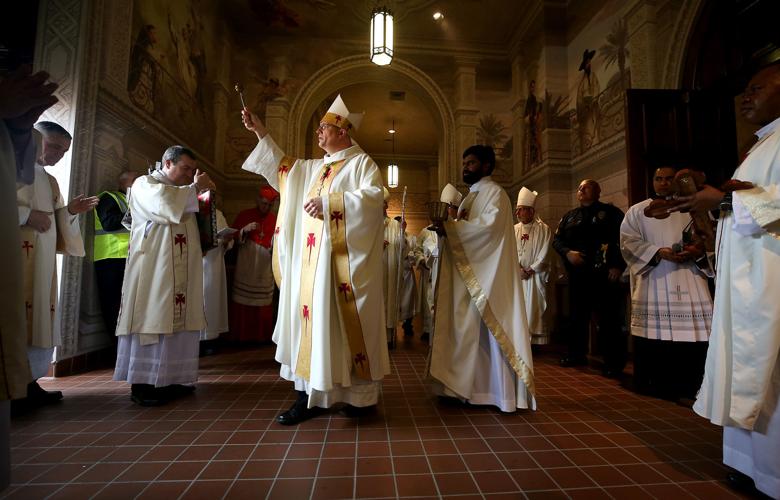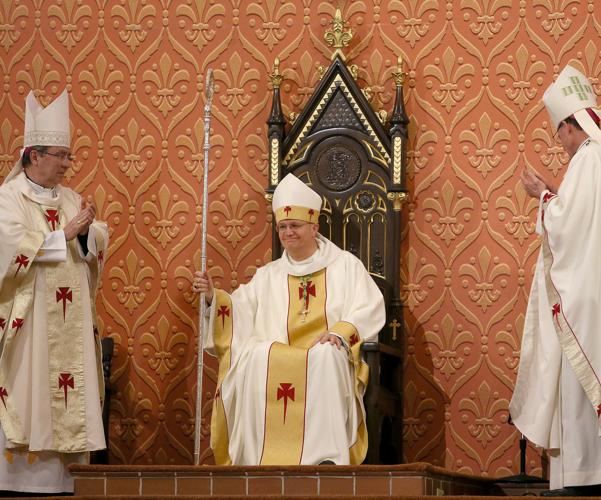When the new bishop of the Roman Catholic Diocese of Tucson thanked his predecessor for his 16 years of service Wednesday afternoon, St. Augustine Cathedral erupted in applause.
Priests, deacons and other leaders of the diocese rose to their feet, cheering in gratitude for outgoing Bishop Gerald F. Kicanas and causing him to choke up.
Bishop Edward J. Weisenburger, 56, became the seventh bishop of the 43,000-square-mile diocese during an installation Mass on Wednesday.
The new leadership comes as Kicanas retires, a requirement for all bishops at age 75. Kicanas submitted his letter of retirement to Rome the summer of 2016. The announcement of Weisenburger’s appointment by Pope Francis came this October.
Approximately 1,100 people crowded into the cathedral, 192 S. Stone Ave., for the Mass, said Steff Koeneman, a spokeswoman for the diocese.
Among those attending were about 25 archbishops and bishops from around the country, including the apostolic nuncio to the U.S. Archbishop Christophe Pierre, metropolitan Archbishop John C. Wester and Cardinal Roger M. Mahony.
Attendees also included civil and interfaith leaders and representatives from local organizations such as Catholic Community Services and Catholic schools. The Mass was invitation-only, and a limited number of tickets were distributed to the diocese’s parishes.
“Today is a big day for our diocese,” said the Rev. Gilbert Musumbu, rector of St. Augustine Cathedral. “We now have a new shepherd, so we are ready to see where his leadership will take us as a diocese. What is his vision of the church in Southern Arizona?”
The ceremony began following a procession of clergy into the cathedral. Weisenburger waited outside to knock on the cathedral’s front door, a tradition from medieval times, he said.
Later, while giving his homily, first in Spanish, then in English, he apologized for any Spanish mistakes and joked about his working grasp of the language. He has already promised to practice.
“Brothers and sisters, as I step into this new role, let it be one of holy friendship,” he said, adding that it entails a “loving relationship with God” and each other.
Weisenburger comes to Tucson from the Diocese of Salina in Kansas, where he had served as bishop since 2012. His first visit to Tucson came in October, coinciding with the announcement that he would succeed Kicanas. In Salina’s diocese, Weisenburger served about 44,000 Catholics. In Tucson’s diocese, he’ll serve about 450,000, the diocese reported.
The new bishop has stressed his care for issues of immigration, the safety of young people and his value for life at all stages.
He also noted at the time of the announcement his plans to have public Masses around the diocese and to spend the beginning of his ministry here getting to know people and places.
Kicanas, who has led the diocese as bishop since 2003, plans to stay in Tucson and get involved in social issues related to education, prisons and opioid abuse, among others.
His advice for his successor?
“The main thing is to be a loving pastor and to be close to his people,” Kicanas said. “To try and immerse himself in the community, to understand its challenges and its blessings, and I have every confidence that he is going to do that.”







